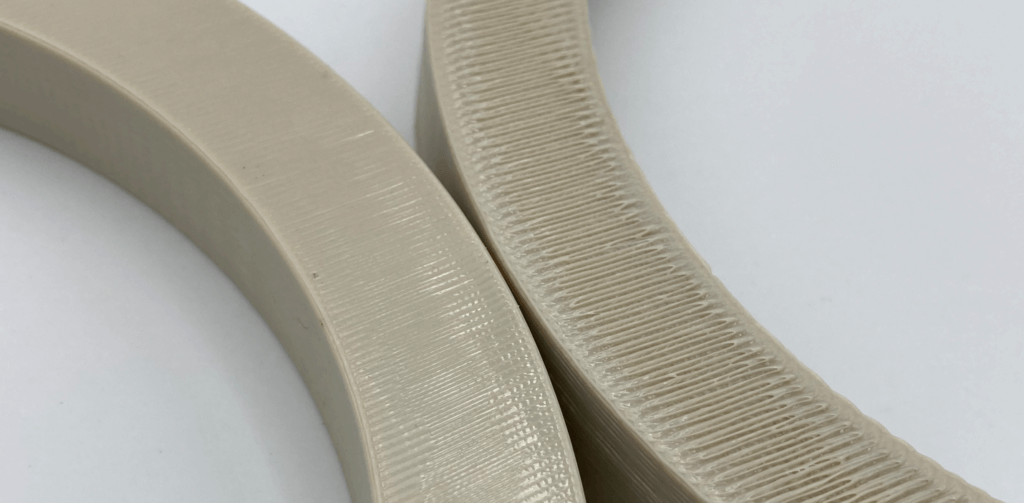In the previous whitepaper it was demonstrated that additively manufacturer PEKK parts nearly matched parts made with traditional manufacturing methods. The mechanical properties of the parts printed with miniFactory Ultra were similar to the ones made with injection molding, extrusion, and compression molding. With this data the additive manufacturing of PEKK parts was proven to be viable solution through near-net shape process. In the second whitepaper we addressed the economic justification of this process since the end users are more widely embracing additive manufacturing.
The seal geometry that was chosen for this research was designed for applications that demand resistance for the most extreme temperatures and aggressive chemicals. The economical justification is addressed through the steps of increasing the productivity on miniFactory Ultra using Kimya PEKK-SC filament. The research was started by first establishing the repeatability of the desired mechanical properties with 0,4mm nozzle size. And then transferring to a 0,6mm nozzle while maintaining the desired results. With such change the manufacturing cost per printed part could be divided by 2.

miniFactory Ultra provides a versatile platform that enables easy means to increase productivity. In this study the nozzle diameter was increased just by 0,2mm which reduced the printing time of a large PEKK seal ring by 47% while still maintaining the desired mechanical properties. This translates to theoretically twice as many parts produced in the same time period.
The desired mechanical properties were achieved using automatic process that produces the strong near-net shape PEKK parts without manual actions from the operator after the initial start of the print. The manufacturing process has two stages in which the part is first 3D printed in mostly amorphous state and then automatically annealed to achieve required high level of crystallinity. This has been made possible by the 250C heated build chamber of the miniFactory Ultra.
The density of the PEKK parts produced during this research were ~99% of the typical value of injection molded semi-crystalline PEKK parts. The wide-angle x-ray diffraction showed crystallinity higher than 25% and on top of those the optical microscopy confirmed that the parts had incredibly low porosity.
Arkema, Kimya and miniFactory are currently working with the end users to go further with PEKK SC printing to leverage the benefits of additive manufacturing. The idea of “one filament, many seals” is something that we are working to implement to end use.
If you are interested to learn more about the topic, download the whole whitepaper from here
Feel free to contact us for free consultation from here
"*" indicates required fields